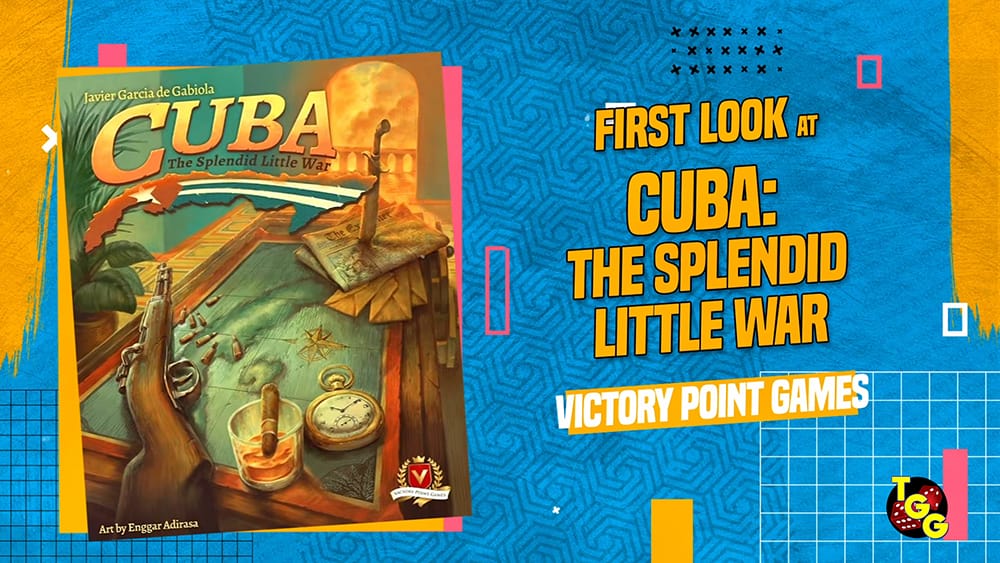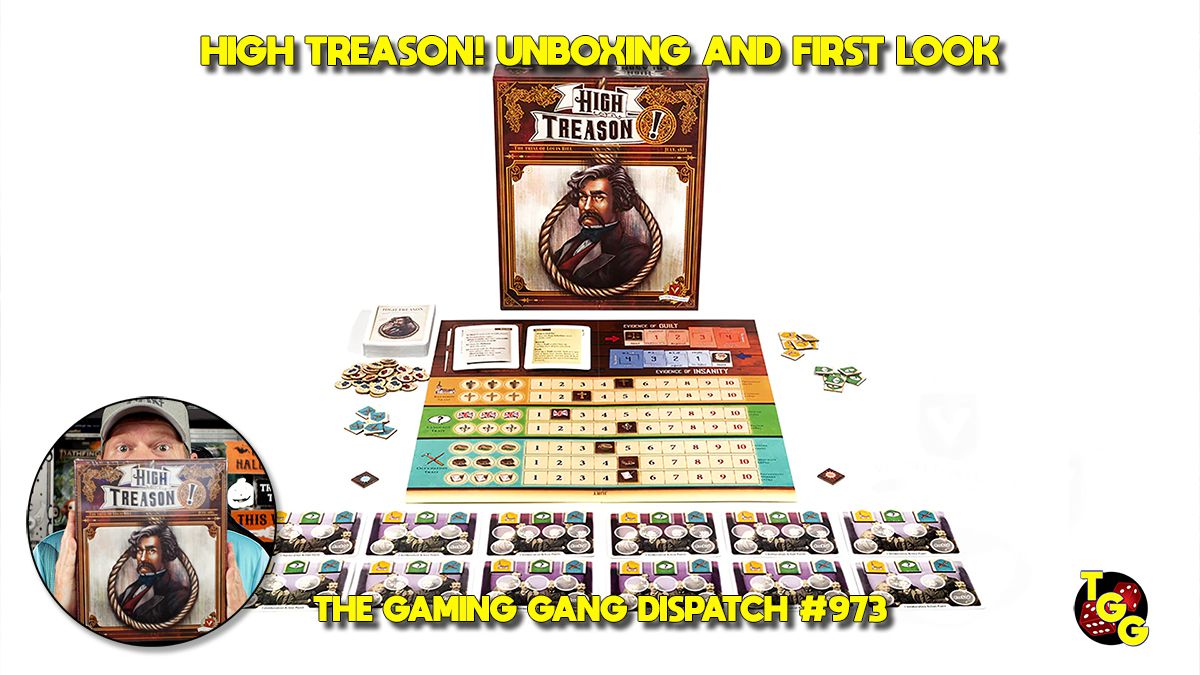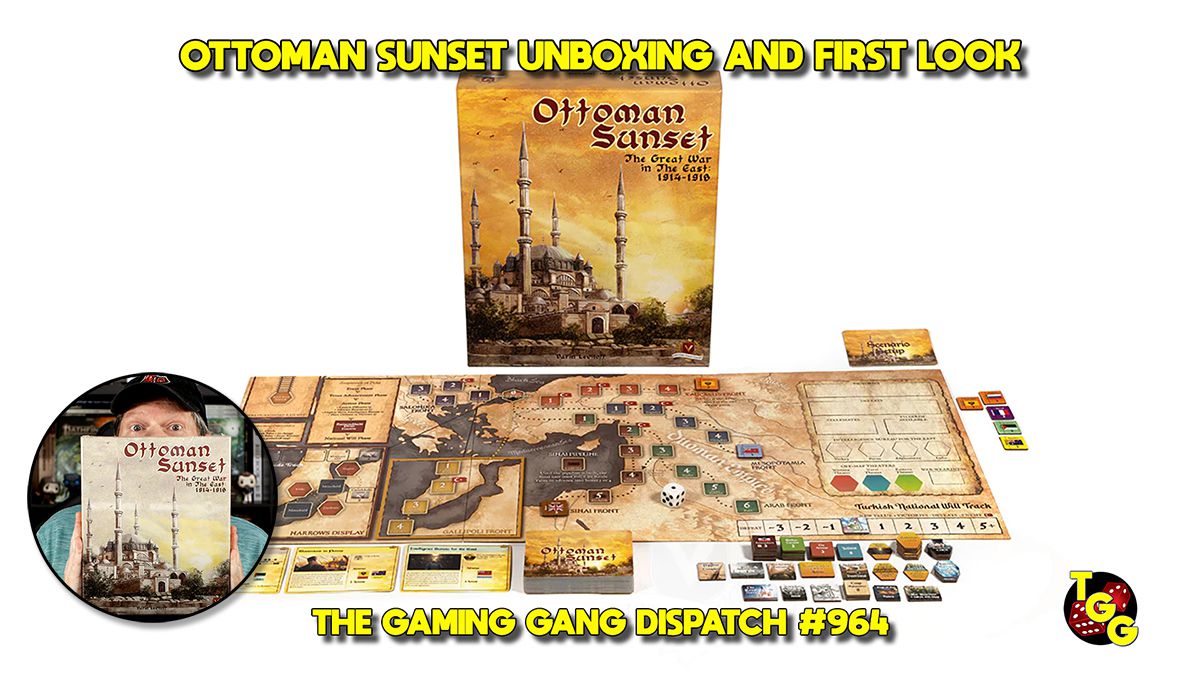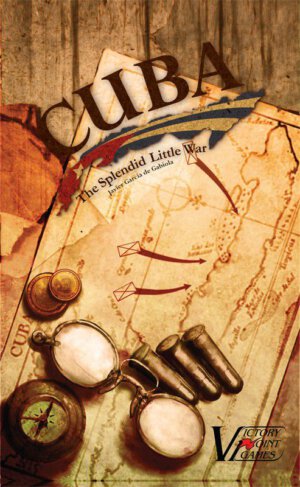
Publisher: Victory Point Games
Designer: Javier Garcia de Gabiola
Artists: Tim Allen, Bryan Armor, Eric Nyquist
Year: 2013
Genre: Late 19th Century wargame
Players: Two players
Ages: 13+
Playing Time: 120 minutes
MSRP: $39.99
While revolutions in Cuba were nothing new throughout history, Americans tend to only focus on the Castro regime coming to power during the 1950s. In fact Cubans had risen before in efforts to throw off the rule of foreign powers, most notably during the late 19th century when Spain held sway. In Victory Point Games’ Cuba: The Splendid Little War two players will vie for power during the third revolution of 1895 to 1898. One player takes on the role of Spain while the other controls the Cuban rebels and, if they come into play, U.S. forces.
Inside the Box
Cuba: The Splendid Little War (C:TSLW) plays out through seven turns, making the title easily completed in around two to two and a half hours. Much of the game is driven by a deck of action cards but I’d refrain from calling C:TSLW a “card driven game” and I’ll explain why in just a bit. Each of the players will also rely on resources to perform various actions, some of which can be utilized by both sides and others are specific to either the Spanish or Cubans.
As you can see in the “Inside the Box” video above VPG has once again done a nice job with the components 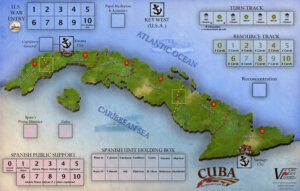
The map of Cuba is divided into six areas (the game uses area movement) as well as detailing various tracks to mark Spanish support at home, possibility of U.S. intervention, available Spanish reinforcements, available resources for each side, game turns, and more. I like the map because it’s large enough to prevent things getting too cluttered with counters but also small enough so you don’t need a huge table to set everything up.
Each of the seven turns are broken into two phases: Action and Administrative. The administrative phase is further broken down into a number of steps as well.
Action Phase – Beginning with the Cuban player each side will alternate action rounds. In effect you can play cards in your hand and conduct actions available to your faction. For example let’s say the Cuban player decides to use the card “Yellow Press.” This moves the United States one step closer to entering the conflict. Now the Spanish player would have an opportunity to do something, maybe coordinate a search and destroy action in order to bring the Cuban rebels to battle. Then the Cuban player would be able to play a card or perform an action. This continues until both players decide to pass on taking any further actions.
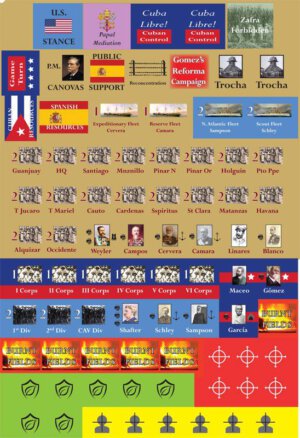
Administrative Phase – Here the players will determine if either side’s victory conditions have been met, provide for U.S. intervention if they track has reached the point where Americans enter the fight, calculate resources for each side, discard all cards in hand (unless a player wishes to spend a resource for each card they want to keep), reshuffle the action card deck and discarded cards together and deal each player cards depending on each side’s available resources, perform some clean up by removing various markers which may have been placed that turn (burnt fields for example), and advance the turn marker to the next turn.
Combat is resolved with relatively little fuss once you get a handle on combat differentials. All die rolls in C:TSLW are successes on fives or sixes (after any die roll modifiers) and hits in combat reduce the enemy by one step; on a hit a full strength unit is flipped to its reduced side and another hit will remove the unit from play. Cities come 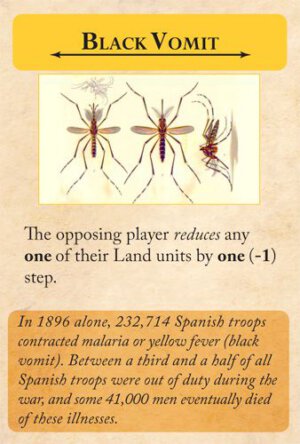
The various victory conditions are a tad complex but in essence Cuba gains independence if Spanish support ever reaches zero (or is left standing at one during an Administrative phase), or if the rebels control a city and Spanish support is five or less, or if the rebels control both Havana and Santiago City during any Administrative phase. If the U.S. enters the war the Cuban victory conditions become a bit convoluted with separate conditions for the Cubans and U.S. and various levels of victory. Spain can instantly win a major victory if at any time no Cuban, or U.S. if they’re in the fight, units or generals remain on the map. Otherwise a minor Spanish victory is achieved if the Cubans, or Cubans and U.S., don’t reach their victory objectives and the game has drawn to the end of seven turns.
Rather than delving into all the particulars of C:TSLW let’s look at some of the aspects of the game from a bit of a higher level.
As I mentioned earlier the cards drive much of the action in the game but unlike what we traditionally consider as card driven games (CDGs) – GMT’s Twilight Struggle as a prime example of the genre –the cards here only serve one purpose; perform the action indicated on the card. Whereas CDGs usually give a player an option of resolving what’s presented on the card or using the card as a form of “currency” per say to pay for another gameplay action, the cards in C:TSLW can only be used to execute whatever is indicated by the card. It’s this aspect of C:TSLW which leads me to not classify the title as a CDG.
The way the card deck is utilized in C:TSLW is interesting as well. Each turn the players will receive a fresh hand of cards. That is unless a player decided to pay resources in order to keep any cards in hand. Which quite a few of the cards represent events or actions which will only take play once, thus to be removed from the game entirely, many could be played a multitude of times during the game depending on the luck of the draw. Since the cards can’t be used in any other way than what’s written on them, it’s entirely possible a player could find themselves with a hand of cards which only benefit their opponent. This is something which may bother some gamers.
While you may think sitting there staring at a hand of cards which make life easier for the enemy would cripple your turn, you can always discard three cards to gain an extra resource. Keep in mind those resources pay for the 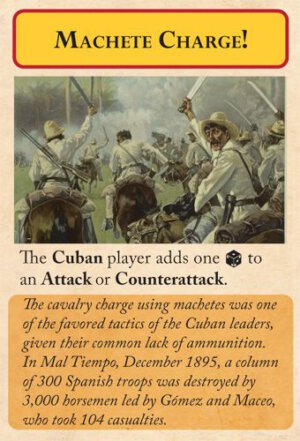
In C:TSLW the Spanish player seems to face a few more challenges than the Cuban player. If gamers are relatively new to wargaming, I might recommend the more experienced of the two take the Spanish reins. Although VPG indicates a difficulty rating of five out of ten for the game I personally think it should be a touch higher and possibly around a seven. The Spanish player needs to root out the rebels and bring them to battle (the rebels are guerrillas in truth) all the while keeping support at home high and preventing the United States from entering the fray. Keeping combat losses to a minimum is vital as well seeing that bringing in reinforcements forces down support at home. Since the forces of Spain begin the game in the southeastern section of Cuba, the Spanish player really needs to break out into the rest of Cuba. This is especially important to not only gain Resources but also protect against U.S. landings to the northwest. If Spain can prevent the Americans from getting involved, the chances of putting down the rebellion significantly increase.
The Cubans don’t have an especially easy time of it though since raising new troops can be a chancy affair due to the fact recruits can only be raised with a successful die roll, whereas the Spanish can simply call up additional troops. The Cuban player needs to focus on driving Spanish support for the war down in the hopes Spain gives up the fight. Trying to keep the Spanish bottled up near Santiago City in the southeast can help the rebels to wreak havoc throughout the rest of Cuba and score resources through area control. U.S. intervention is a tricky proposition as well since drawing the Americans in greatly improves the chances of gaining Cuban independence but also denies the Cuban player for any chance at a major victory.
I find Cuba: The Splendid Little War to be a rather unique experience. This isn’t to mean everyone will dig the title as much as I since there is a lot of randomness involved and some gamers could be frustrated by that fact. Not 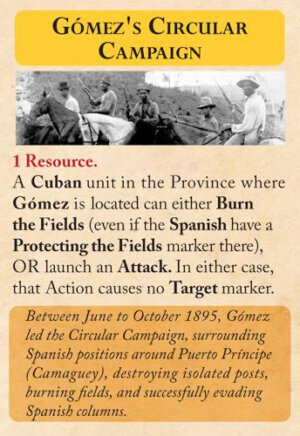
While some may not appreciate so much of C:TSLW left to the whims of chance, I like the design because each time you play the experience is sure to be different; a plan of action which leads to victory in one game may turn out to be completely ineffective the next. C:TSLW also provides a good historical feel without resorting to the usual design trappings which normally leaves a predetermined, plotted taste in one’s mouth. I could do without the rather unbalanced nature some plays eventually lead to but there isn’t much to be done since that’s how the design plays out. Still, more times than not the game is fairly even.
For gamers looking for a title on a subject which hasn’t been gamed to death, provides a different situation every time you play, and can handle a good deal of randomness tossed into the mix, Cuba: The Splendid Little War is a solid game to add to your collection.
[rwp-review id=”0″]




